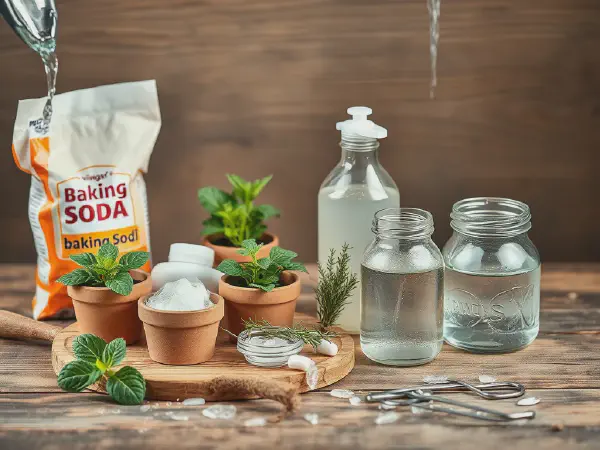Effective DIY Drain Cleaning Solutions for Hair Removal

DIY Drain Cleaning Solutions for Hair Removal
Clogged drains are a common nuisance in households, especially when it comes to hair accumulation. DIY drain cleaning solutions for hair removal are not only effective but also eco-friendly and cost-efficient. By utilizing simple household ingredients and tools, you can tackle hair clogs with ease, ensuring a smooth drain flow in no time.
Hair clogs often build up in bathroom sinks, showers, and tubs, leading to slow drainage and unpleasant odors. DIY drain cleaning solutions for hair removal can help you resolve these issues naturally, without resorting to harsh chemicals that may damage your plumbing. With the right techniques and a little effort, you can maintain clean and functional drains.
In this article, we will explore common causes of hair clogs, homemade drain cleaning recipes, essential tools for DIY drain cleaning, preventative measures to avoid hair accumulation, and the differences between professional and DIY solutions. By arming yourself with this knowledge, you can effectively manage hair-related drain issues yourself.
As you delve into DIY drain cleaning solutions for hair removal, you will discover practical recipes using ingredients like baking soda, vinegar, and salt, alongside invaluable tips and tools for effective drain maintenance. This guide is designed to provide a comprehensive understanding of how to keep your drains clear and functional without unnecessary expense.
Get ready to reclaim your drains by implementing these DIY drain cleaning solutions for hair removal, allowing you to enjoy a hassle-free home environment and extend the life of your plumbing system.
Common Causes of Hair Clogs
Hair is primarily composed of a protein called keratin, which can bond with soap scum, grease, and other debris in your drain. Over time, small amounts of hair, especially from long hair, can accumulate and cause blockages. Understanding hair composition and its impact on drains is essential for effective maintenance.
Household areas particularly prone to hair accumulation include bathroom sinks, showers, bathtubs, and laundry rooms. These areas see the most hair shedding, often exacerbated by grooming activities such as brushing, washing, or styling hair. Being aware of these locations helps in implementing preventative measures to mitigate hair clogs.
Symptoms of hair-related drain issues may include slow drainage, foul odors, and water pooling around the drain. If you notice any of these signs, it’s a clear indication that your drains require immediate attention to avoid more significant plumbing problems in the future.
Homemade Drain Cleaning Recipes
One of the most effective DIY drain cleaning solutions for hair removal involves using a mixture of baking soda and vinegar. Start by pouring a cup of baking soda down the drain, followed by a cup of vinegar. Let the mixture sit for about 30 minutes, then flush it with hot water. This foaming reaction helps dislodge hair clogs and clear the drain.
Creating enzymatic cleaners with household ingredients is another excellent approach. You can mix baking soda with warm water and a few drops of dish soap to create a natural enzyme cleaner. This mixture helps to break down hair and grease, making it easier for them to wash away.
A simple salt and hot water mixture can work wonders for minor clogs. Boil a pot of water and mix in about half a cup of salt. Slowly pour the mixture down the drain, allowing the hot, salty water to loosen hair and debris. This method is particularly effective as a regular preventive measure.
Tools for DIY Drain Cleaning
To effectively remove hair clogs, certain tools can prove essential. A rubber plunger, for example, creates pressure to push clogs through the drain when used correctly. It’s a simple and effective tool that every homeowner should have at hand.
A plumber's snake is another invaluable tool for DIY drain cleaning. This coiled tool can navigate through pipes and is designed to grab or break apart hair clogs. To use it, insert the snake into your drain and twist it to grab onto the blockage, then pull it out gently.
Using a wet/dry vacuum can be an efficient solution for clogs. Set the vacuum to liquid mode and create a seal over the drain. Turn on the vacuum to remove hair and debris. This method can be particularly effective for larger clogs that may be otherwise difficult to remove manually.
Preventative Measures for Hair Clogs
To reduce hair shedding in the bathroom, consider implementing a consistent grooming routine. Regular vacuuming or sweeping can also help keep hair off the floors and prevent it from making its way into drains. Additionally, consider using products that reduce hair loss.
Installing drain hair catchers or filters is one of the best preventative measures against hair clogs. These inexpensive devices can be placed in shower and sink drains to catch hair before it enters the plumbing, significantly reducing the chance of clogs.
Establishing a routine maintenance schedule for your drains can prolong their longevity. Regularly flushing drains with hot water or periodically using DIY cleaners can help maintain clear pipes and prevent buildup before it becomes a significant issue.
Professional vs. DIY Solutions
While DIY solutions are effective for minor clogs, there are times when it is necessary to call a professional plumber. If you experience recurring clogs, slow drainage even after cleaning, or if you are unsure of the extent of the issue, a professional can provide a thorough inspection and resolution.
When comparing the costs of DIY versus professional services, DIY solutions typically require only household ingredients or tools, making them more budget-friendly. However, professional services may be more suitable for serious plumbing issues where immediate and expertise is necessary.
Finally, while DIY solutions can be effective, the long-term effectiveness may vary based on the severity of the clog and frequency of maintenance. Regular use of DIY cleaning methods can significantly reduce the chances of severe clogs from occurring, leading to a healthier plumbing system overall.
